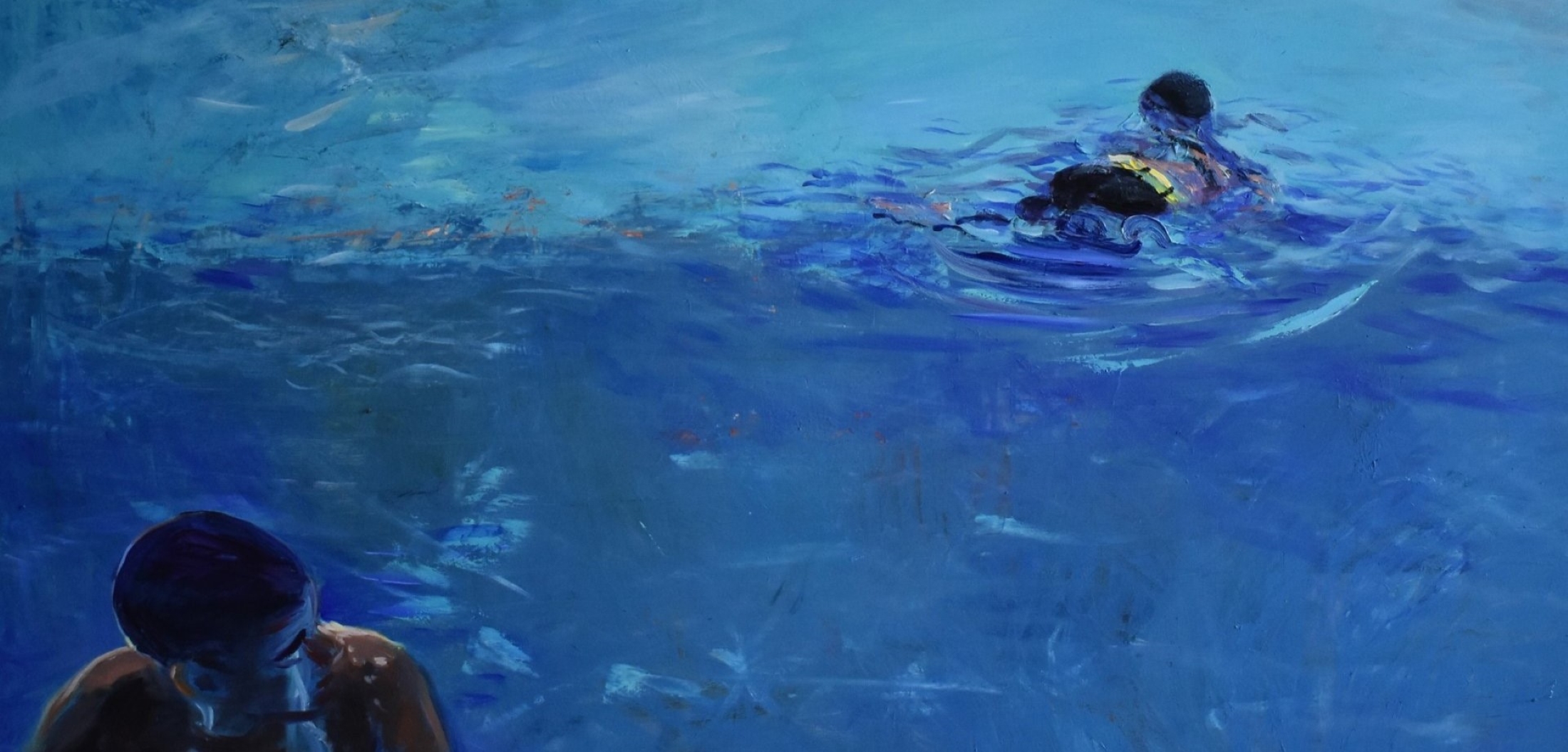
10 contemporary Bulgarian artists you should know
Bulgarian contemporary art is mostly known for Christo Javacheff who passed away in 2020, but there are definitely a lot more artists who are worth knowing. Some of them are exploring social and political themes while others are concentrated on Bulgarian culture. Here are ten contemporary Bulgarian artists that you can appreciate.
1. Simona Ruscheva

Soul Fire by Simona Ruscheva, 2021 © Simona Ruscheva
Although she is currently living and working in London, Simona Ruscheva still refers to her cultural roots. But her main interest is not just Bulgarian culture, but the whole Slavic culture of the Balkans. Through her art she tries to reconnect with her culture, transforming and implementing mythology, rituals, traditions, and beliefs in the contemporary life of these cultures.
An interesting glimpse into this subject gives the artist’s philosophy. Although her main visual inspiration is Bulgarian culture, Ruscheva is convinced that narratives and symbolism of different cultures should be viewed as not being representative of any specific culture. Probably that is why her portraits of people in national clothing are placed on abstract backgrounds that are stylized in national motifs. They look like they are out of space and time and it makes them kind of universal.
2. Velislava Gecheva

Moments and Moods by Velislava Gecheva, 2023 © Velislava Gecheva
Velislava Gecheva (b. 1986) lives and works in Sofia, Bulgaria. Through her art, she shows people living their everyday life, connecting with each other and with nature which is also an important theme in her art. Gecheva’s paintings look like photos that were taken occasionally, without special effort or composition. She depicts unimportant casual things like people sitting on the stairs, the backside of the tribune, or moments of sport competition. But such unimportant little moments caught in the paintings are actually these little things that embody real life around us.
3. Nedko Solakov
Born in Cherven Bryag, Bulgaria, and based today in Sofia, Nedko Solakov (b. 1957) makes illustrations, paintings, videos, as well as performances and interventions in public places. Almost all of his projects are curated by European or international curators which made him one of the leading Bulgarian artists on the international field.
Solakov’s works often play with viewers’ expectations and with the context in which they were created. He shows the existential themes that are expressed in his works through vivid and clear metaphors with a sense of humour. His works, although they are made in particular contexts, could nevertheless be understood by everyone. Solakov believes that through humour and sarcasm, he affects important themes.
4. Elitsa Baramó
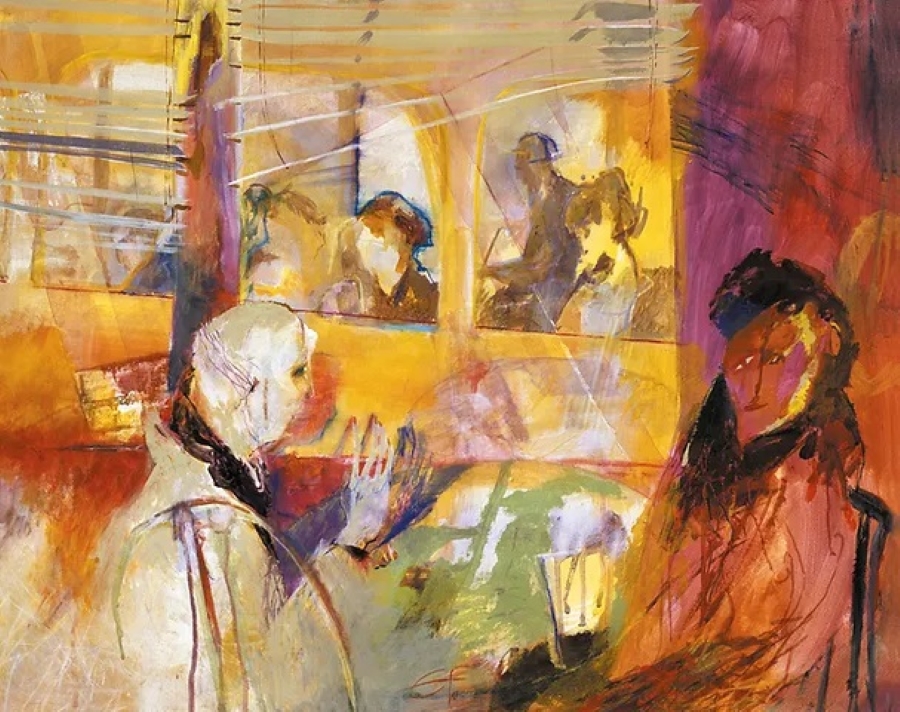 Monologues by Elitsa Baramó, 2000 © Elitsa Baramó
Monologues by Elitsa Baramó, 2000 © Elitsa BaramóElitsa Baramó (artistic name of Elitsa Baramova) was born in Sofia, Bulgaria, and spent her early childhood in Cuba. She works in various mediums: painting, video art, graphic design, and jewellery design. Although Baramó is not bound to any specific genre, she was once classified as a “neo-existentialist painter” which nevertheless does not limit her artistic expressions. Freedom of improvisation alongside following the rules of composition and monumentality is one of her artistic approaches.
An important aspect of Baramó’s art is that she is concentrated on psychological and plastic problems and emphasises the importance of experimenting. She gains inspiration from nature, especially in its symmetry searching for new forms and structures. Nevertheless, she also follows the ideas of impressionists trying to only paint what she knows and sees around her.
5. Nora Ampova
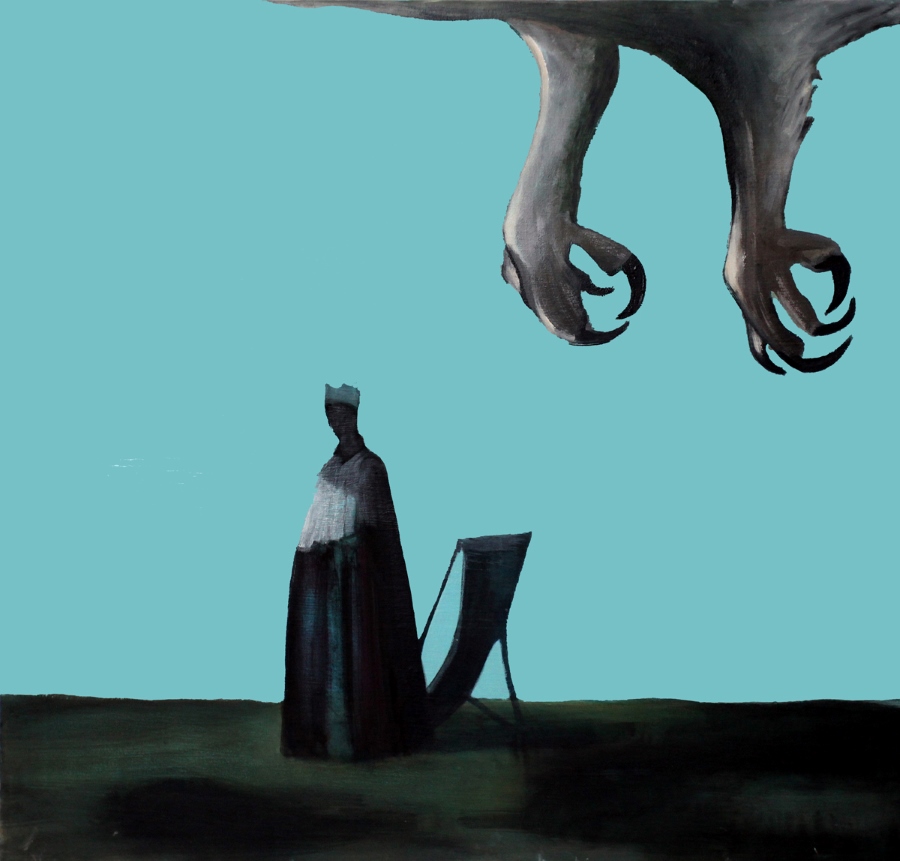
Enjoy by Nora Ampova © BOYSCOUT, Nora Ampova
Nora Ampova (b. 1989) is a visual artist based between Geneva, Switzerland, and Sofia, Bulgaria. In her works she tries to experiment and pay attention to the innovations, but with respect to the classics. About her art, she says that it is
open and social, often infused with humour and irony.
In her works, Ampova explores the themes of space and time, making emphasis on the existence of tachyonic particles. These particles are hypothetical, they can travel faster than light. Scientists are convinced that such things cannot exist due to their inconsistency with the laws of physics. But for art, the probable existence of tachyons can make it possible for the existence of the past and the future in one space of a painting.
6. Alexander Telalim
Alexander Telalim (b. 1966) is a Bulgarian artist, who studied art at the Grecov Art College, Odesa, Ukraine, and at the National Academy of Fine Arts in Sofia, Bulgaria. He is currently living and working in Bulgaria and participated in multiple exhibitions all around the world. In his art, he expresses the sensation of Eastern European aesthetics and philosophy.
Having absorbed different cultures, the artist tries to combine them in his work. A special place in his art is occupied by watercolours, which he especially appreciates because this technique allows the artist to express a poetic image of the world around him. His work is intuitive, spontaneous, and poetic. The ordinary everyday world in the watercolours of Telalim transforms into a beautiful poetic world.
7. Krassimir Terziev
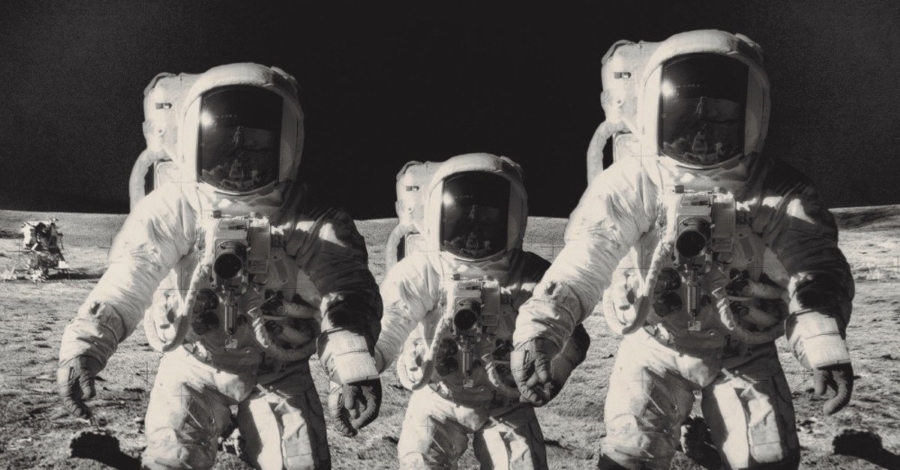 Family by Krassimir Terziev, 2015 © Daily Sabah, Krassimir Terziev
Family by Krassimir Terziev, 2015 © Daily Sabah, Krassimir TerzievInterdisciplinary artist Krassimir Terziev (b. 1969) questions the boundaries between reality and fiction. He explores the transitions and tensions between a globalised world and symbolic imagery. In the 1990s he was one of the pioneers in digital media in Sofia, where he's still working today.
Using drawings, paintings, videos, sculptures, and installations, Terziev explores the problems from different angles and the contexts of different countries. He does not even limit himself to the planet Earth and often ventures into unknown worlds in search of answers.
8. Luchezar Boyadjiev
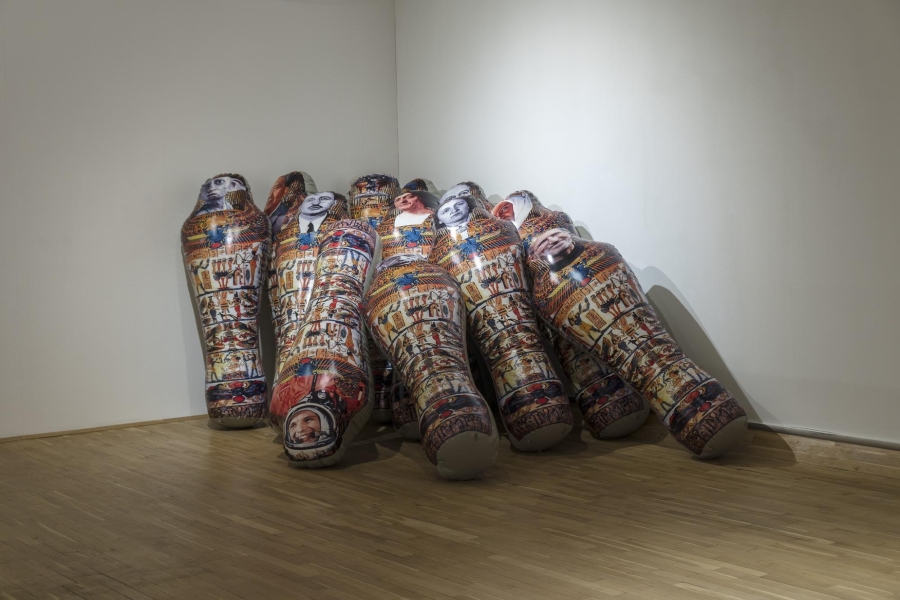
Untitled Mummy Project (‘Hold your breath!’) by Luchezar Boyadjiev, 2012 © Open Arts Foundation
Luchezar Boyadjiev (b. 1957) is an artist who was trained as an art historian and theorist. He is also a Founding Member of the Institute of Contemporary Art - Sofia. All that adds a special meaning to his multimedia practice: installation, photography, drawing, objects, text, video, and performative lectures. He concerns issues of traditional symbols of power and religion as well as the social conditions in Bulgaria. He also does not forget about nowadays’s important virtual world and global affairs.
In his recent works, Boyadjiev explores the transformations of urban structures in a globalised world as well as visual images and texts around us. He sees contemporary ads and billboards as the ancestors of ancient icons from religious beliefs.
9. Ivan Moudov
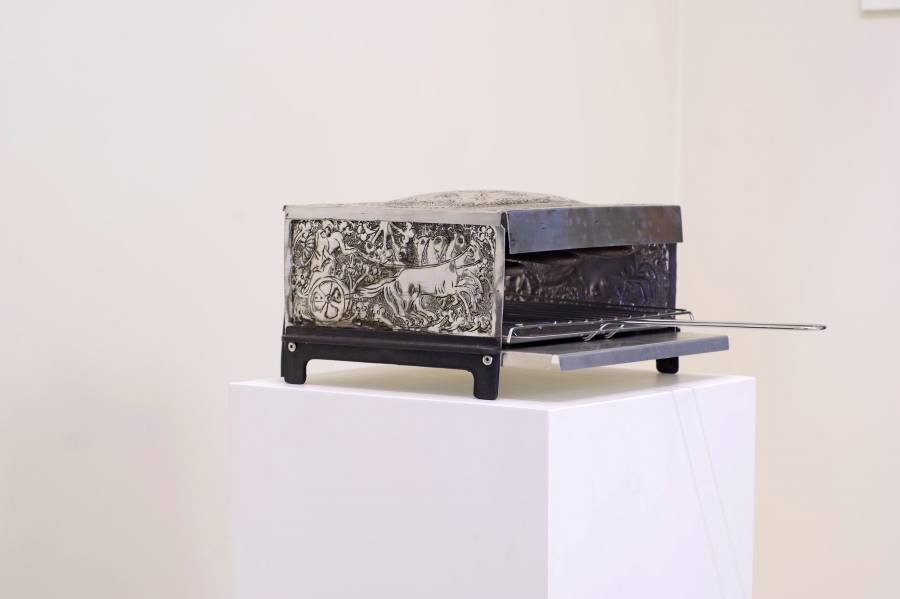
Ivan Moudov (b. 1975) works in photography, video, performance, and installation. His art is concentrated on the problems of socio-political and economic conditions of art. He also reflects on the problems of art business, lack of institutionalisation and support structures of contemporary art in Bulgaria.
Moudov also questions the relations between art and the systems of power, exploring their functioning by subverting the rules and norms stated. For example, he works with the regulation of public space. One of his works threw the traffic of the entire city into chaos to show the fragility of the rules that stand behind the traffic circle.
10. Pravdoliub Ivanov
Pravdoliub Ivanov (b. 1964) was born in Plovdiv, Bulgaria, and lives and works in Sofia. In his works, he clashes the views, tries various innovative approaches, and breaks the stereotypes. For him not only the result of working on artwork matters but also the relations between his art and the public that consumes it.
The artist says that there is no certain idea for his art and he just questions different political, social, or domestic issues that triggered him. His works of art are kind of the crossing point where reality and fantasy confront each other, but they never belong to any of these fields always being somewhere between.
Want to learn more? Check out our article on 12 amazing facts about paintings that you might not know.
